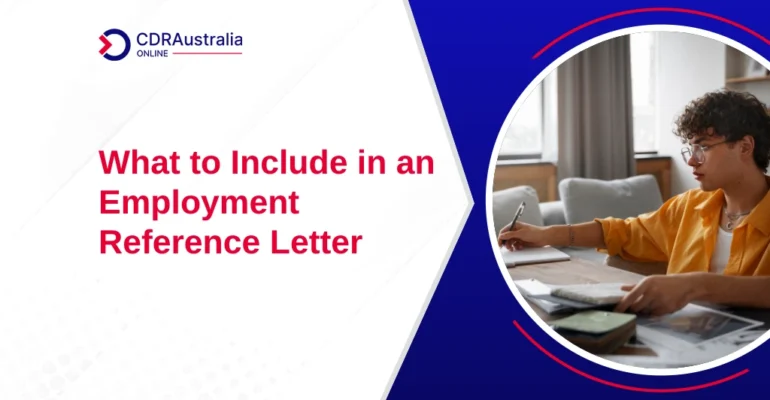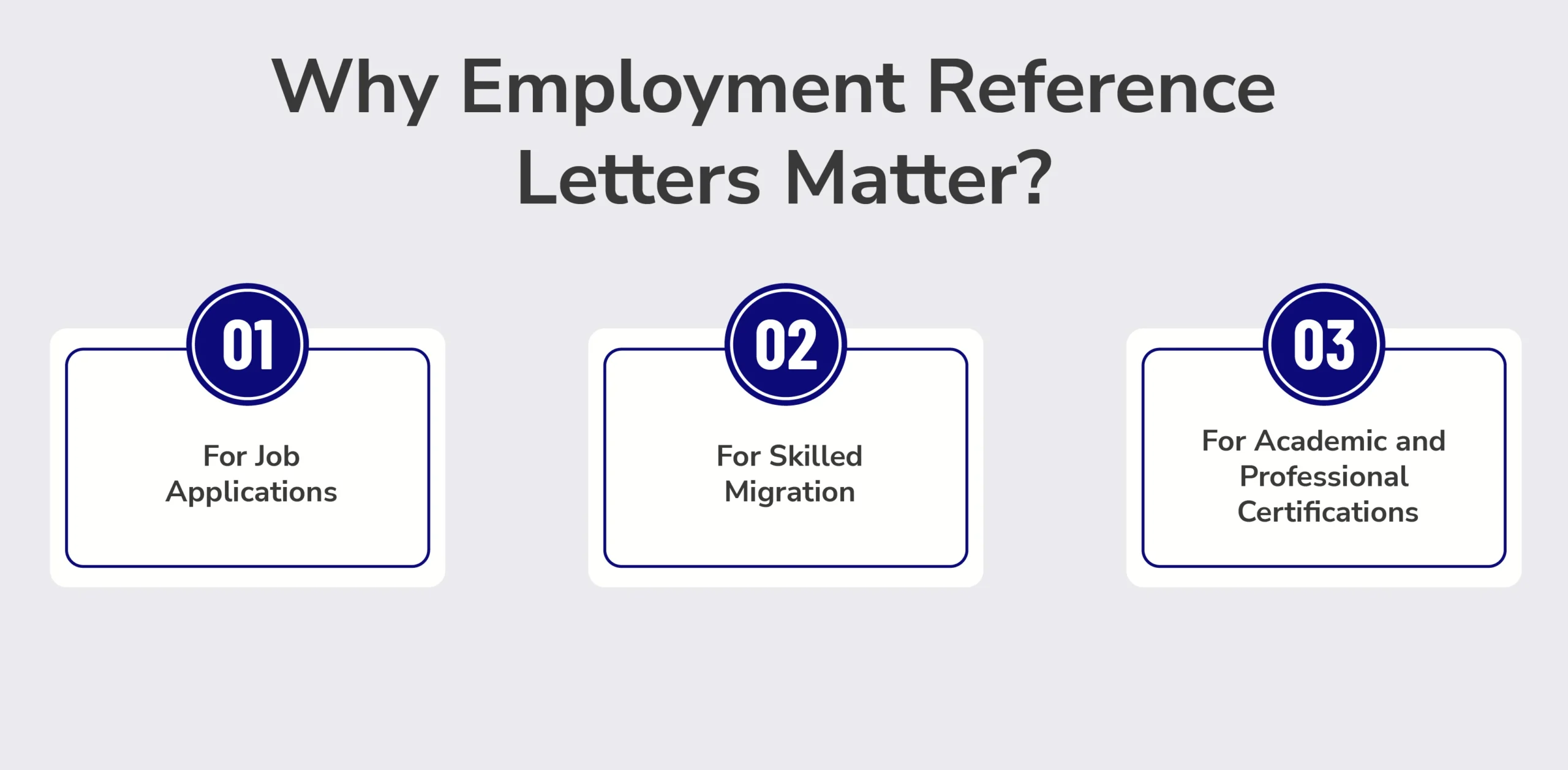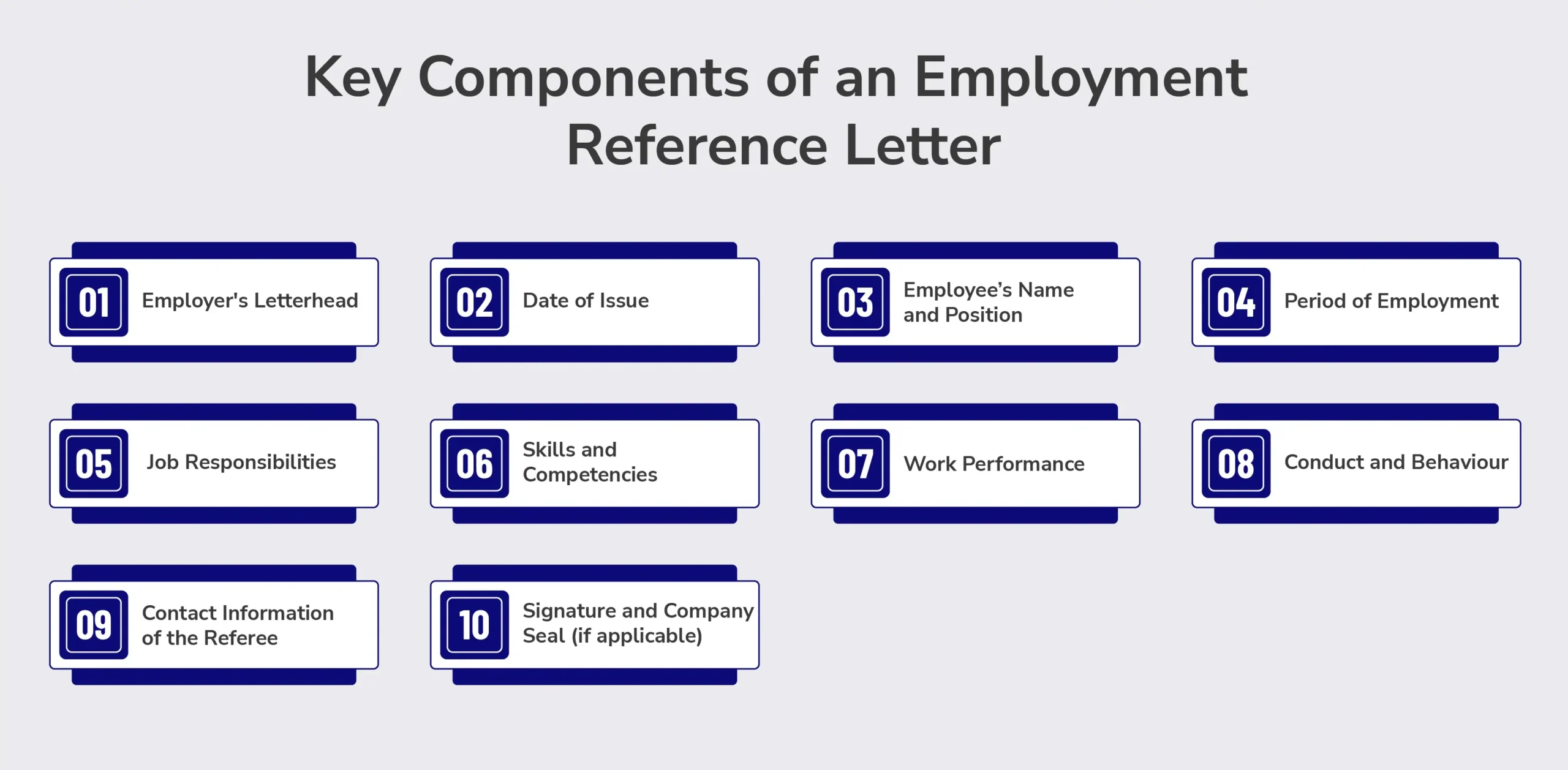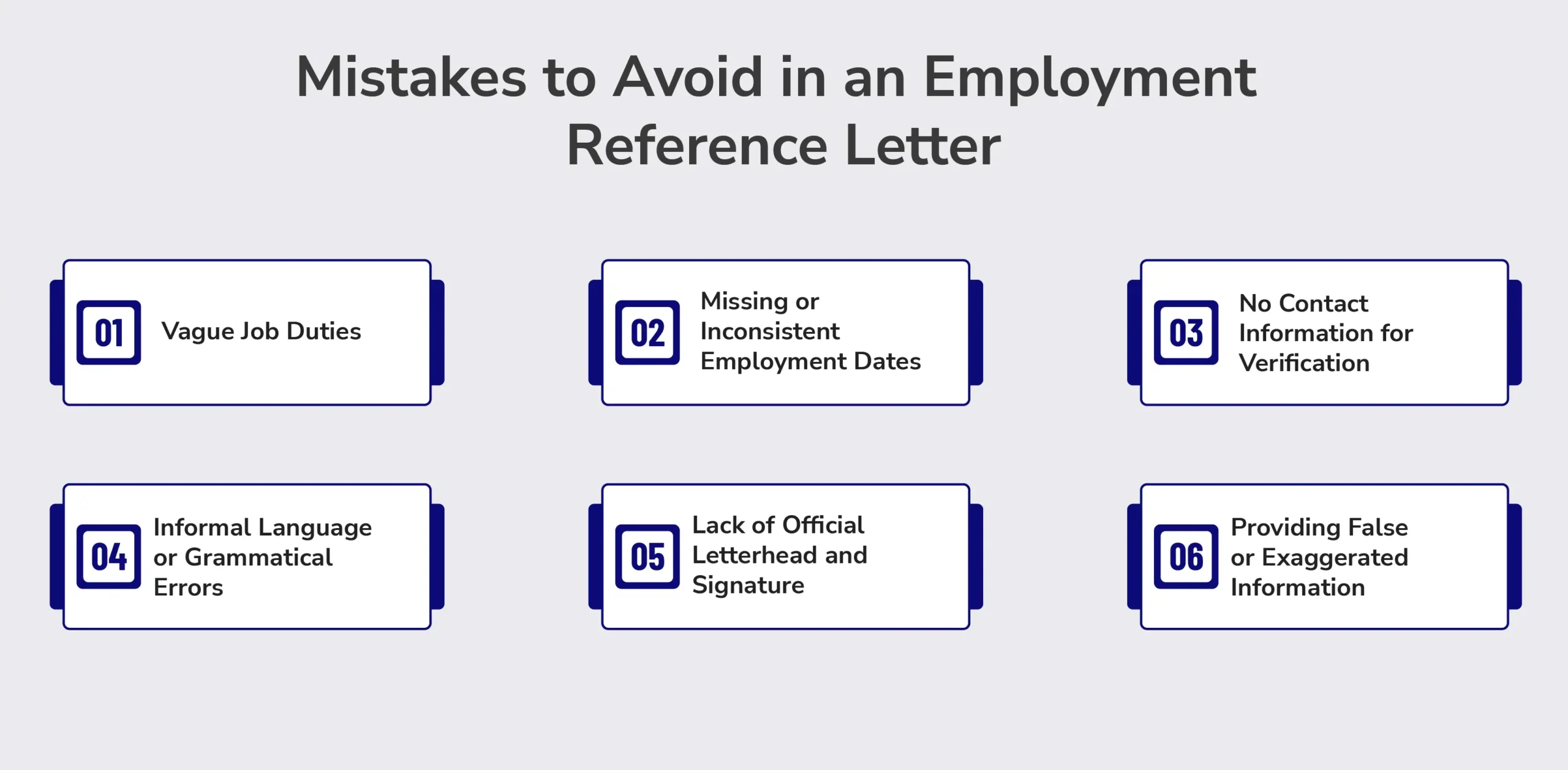What to Include in an Employment Reference Letter

What to Include in an Employment Reference Letter
An employment reference letter is an essential artefact that determines the outcome of job applications, including professional licencing and skilled migration applications. The document functions as a sponsored professional statement by present or past employers, confirming work chronological records, competencies, ethical standing, and appropriate candidature for particular positions and targets.
The following guide contains all the key components and formatting rules and example text, which will help you develop employment reference letters with proper professional impact. Real employment reference letters serve beyond administrative requirements because they function as professional endorsements.
The reference letter enhances the credibility of resumes and visa applications while promoting trust between both sides during the hiring process. A solid reference letter contains detailed statements that validate skills and character, along with comprehensive descriptions of all key points.
🔑 Key Highlights
- An Employment Reference Letter indicates work history, skills and accomplishments.
- It has to contain official letterhead, dates, job details and referee contacts.
- Applications must avoid ambiguous role definitions and incomplete details while using formal language.
- Professional validation accompanies an improved application credibility through this information.
What Is an Employment Reference Letter?
The employment reference letter represents a formal document that companies use to provide information about their employees’ work periods. The letter presents details about your position, along with the duration of employment and descriptions of your duties, along with possible examples of successes. This document functions as an independent work verification that new companies, learning establishments or administrative bodies demand primarily to support immigration or visa procedures.
Why Employment Reference Letters Matter?

a. For Job Applications
Employment reference letters enable recruiters to learn about candidates’ former positions at work and their social aspects and organisational compatibility. An outstanding reference statement can create a decisive advantage for the candidate during the application process.
b. For Skilled Migration
Employment reference letters serve as crucial documentation for skilled migration visa processing since Australia, along with Canada, needs detailed information from referees. The letters need to follow specific requirements, particularly when directed to authorities such as Engineers Australia and the Australian Computer Society (ACS).
c. For Academic and Professional Certifications
Professional organisations, together with universities, need employment verification letters as part of their evaluation process for both professional certification and enrolment purposes and academic credential verification.
Key Components of an Employment Reference Letter

The employment reference letter requires particular essential elements to be both authentic and useful for potential employers. The elements in this document help ensure that both the document’s credibility and applicant declarations are authentic.
1. Employer’s Letterhead
The official letterhead of the company stands as the necessary foundation for all professional employment reference letters. The official document requires the organisation’s trademark in combination with its full name, together with its official address and all necessary contact information. The letterhead authentication demonstrates to the recipient that the employer issues genuine documents from a recognised organisation.
2. Date of Issue
A written or issued date needs to appear in the letter. The date of issuance helps the assessment of information value by the recipient, specifically for job applications and visa submissions, which require strict deadlines.
3. Employee’s Name and Position
The employee’s official name needs to be displayed clearly, in addition to their job roles performed throughout their working period. The letter also includes employee IDs and department names to enhance clarity when relevant.
4. Period of Employment
The dates that specify when the person started and stopped working at the company form part of this section. The record should confirm if the role operated as full-time, part-time or contractual in terms of work hours. Background checks and immigration procedures require consistent dating information to be completed successfully.
5. Job Responsibilities
The employee’s main work obligations need to be detailed completely in this part. The listing of detailed responsibilities shows the reader what skills are needed for the position and improves understanding of the work boundaries for visa and job application screenings.
6. Skills and Competencies
The section presents evidence regarding both essential technical capabilities and soft skill applications displayed by the employee during their duties. The document should list necessary skills, which can include project management along with teamwork abilities and communication methods, in addition to particular software applications based on the role requirements.
7. Work Performance
The employer offers a general evaluation of the employee’s performance results. The provided statements will evaluate performance traits, including deadline compliance, output standards, initiative levels, problem-solving capabilities, and major accomplishments from their employment period.
8. Conduct and Behaviour
This part of the review provides an evaluation of professional conduct, together with attitude and social interactions. Bosses typically use descriptions of reliability alongside integrity, punctuality and teamwork to establish how someone shows their personality traits.
9. Contact Information of the Referee
The referee’s reference letter must contain a clear display of their full name, together with their workplace designation and both mobile number and professional email. Through the contact information, the recipient has a means to contact the referee in case they require detailed validation or need further clarification.
10. Signature and Company Seal (if applicable)
A referee’s signature needs to appear at the end of the letter, with the addition of the official company stamp whenever it is feasible. The added signature at this point signifies document authenticity and adds official authority to the content.
Mistakes to Avoid in an Employment Reference Letter

The employment reference letter strengthens its messages to help determine crucial decisions for hiring managers, visa officers, and licencing body approvals and verifications. Any mistake in this important document might result in processing delays, application rejections, and credibility issues.
1. Vague Job Duties
Miscellaneous job descriptions present as one of the prevalent and harmful issues within reference letters for employment situations. The description of technical duties and project leadership gives no actual details about an employee’s professional qualifications.
When seeking skilled migration or licencing or applying for work, the employee must have their routine duties precisely outlined in the reference letter. Employment reference letters must include information about the applied technologies alongside project examples together with descriptions of client and team relationships and performance indicators.
2. Missing or Inconsistent Employment Dates
The dates included in employment reference letters hold special importance for visa and licencing applications that need documented work duration. When an employment reference letter contains inaccurate start and end dates that mismatch between different documents, it will generate suspicions.
The authorities often doubt that the candidate has honest intentions because of the empty spaces. The specific employment periods must be stated precisely using the DD/MM/YYYY date format while recording all positions along with their start and end dates. The provided dates need to confirm with the employment duration mentioned in both resume documents and secondary supporting evidence.
3. No Contact Information for Verification
A referral letter from a professional employment reference requires the writer to include every necessary contact detail. The inclusion of full details enables recruiters, together with visa officers or any relevant authority, to check the authenticity of such letters. The exclusion of essential contact details makes the letter invalid for use.
A referee should at least render their full name and their business designation along with their phone number and company email address. Additional credence to the letter comes from providing both an official website and an office location of the company. Thus, the data must remain accurate and current.
4. Informal Language or Grammatical Errors
Professional reference letters must maintain formal standards in all their content. Slang and informal language, together with a casual writing style, diminish the authority of the assessment letter. Poor grammatical errors together with mistakes in sentence structure along with typos can make readers wonder about the writer’s qualifications and likely create the perception of their carelessness.
Professionalism can be maintained in reference letters through proofreading, formal language selection and grammar-checking tools, as well as asking colleagues to review the document. It becomes essential to approach the letter formally when professionals, including visa case officers academic boards and hiring managers, read the document.
5. Lack of Official Letterhead and Signature
An employment reference letter becomes unsuccessful at formal verification when it lacks both official business stationery and the authorised signature of the writer. An official letterhead includes the company logo together with contact information that establishes the authenticity of the document.
The absence of proper documentation may cause authorities to think the letter is false. For authentication purposes, both the handwritten signature of the referee and the official letterhead are essential. Incorporate a company visual identification stamp if it is available. Proof of validity for the letter emerges from these basic elements, which create an authoritative professional style.
6. Providing False or Exaggerated Information
Courting severe penalties for such severe offenses consists of creating and distorting details about job accountabilities as well as expertise levels during employment timeframe. Enhancing employee profile information for better job opportunities leads to severe repercussions because it involves dishonest activity. Employee and organisational sanctions as well as application denial follow from verification discrepancies identified during checks performed by skilled migration bodies, professional boards and employers.
Conclusion
Employment reference letters should never be treated as casual forms because they provide essential validation of both professional qualifications and working experience while demonstrating character traits. Every application stands to gain substantial benefit when a reference letter provides official endorsement in processes seeking skilled migration opportunities or new job placements or access to educational programmes or professional authorisation.
The most effective employment reference letter combines correct work period dates with detailed job descriptions and professional accomplishments supported by contact information and official presentation through company stationery and authorised signatures. All core components in this document perform separate functions to make the content more credible while showcasing professional competence.
FAQs
1. What are the 6 details that should be included in a letter of recommendation?
The six details that should be included in a letter of recommendation are as follows:
- Referee’s name and contact details
- Relationship to the applicant
- Applicant’s job title and employment dates
- Key responsibilities and achievements
- Skills and qualities demonstrated
- Referee’s signature and company letterhead
2. How do I recommend someone for a job?
Briefly explain your relationship, highlight the person’s skills and achievements, mention why they’re a good fit for the role, and close with a confident endorsement.
3. What should not be included in a letter of recommendation?
Avoid personal or sensitive information, exaggerated claims, negative comments, vague job descriptions, and informal language or tone.
4. What is an employment reference letter?
A document from an employer or colleague confirming an individual’s work history, performance, skills, and character, often used for job applications or migration.
 Chat with us
Chat with us